
What the Founders of the American republic could not have
forseen was the manner in which the success or failure of "National
expansion' to the Pacific Ocean in the 19th century would depend
almost entirely on one legal tool - the Indian treaty.

The unlawful removal of Indians from their treaty-protected
homelands in the nation's southern states in the 1820s and 1830s
hurled the nation into a fiercely contested feud that pitted states
against the federal government over the question of Native American
sovereignty. When the nation's highest court ruled that the
states did not have dominion over Indian governments, President
Andrew Jackson and the legislatures of southern states ignored the
ruling and pressed ahead with their plans to forcibly remove
Indians from their homelands.

Probably no event in American history is more symbolic of the
American people's refusal to abide by their own laws of 'life,
liberty, and the pursuit of happiness,' or to honor their own
solemn promises made in treaties, than the events that led to the
Battle of the Little Big Horn. Here, the famed western artist
Charles M. Russell chose to focus on the Indian's attack rather
than the more common view of the 7th Cavalry's defense.

To expand westward, the American republic was legally obligated
to enter into hundreds of treaties with the Indian nations that
owned the land white citizens coveted from the nation's earliest
days. Those treaties were like stepping stones across
the continent, but in time, virtually everyone would be unlawfully
abrogated by the very lawmakers who ratified them.

The founding principles enshrined in the Declaration of
Indepence - life, liberty, and the pursuit of happiness - were
denied to Native Americans, African Americans, Mexican Americans,
and Asian Americans, until well into the 20th century. Laws
passed in the 1870s denied Indians the freedom to practice their
own religions or to assemble without approval of government
agents.

Ethnographers estimate that the population of the America's in
1491 may have been as high as seventy-five million people. By
1900, the national census showed that fewer than a quarter of a
million Native Americans had survived the arrival of the European
in North America.

Many of the the battles during the Indian Wars of the 19th
century were started by white settlers ignoring the treaty rights
of Indians, conflicts that were further enflamed when the federal
government refused to defend Indian lands from whites as they had
promised in the treaty negotiations.

After the Dawes Act was passed in 1887, Congress ignored the
'establishment clause' separating church from state and turned
federal Indian policy over to Christian missionaries. For the
next fifty years, Indian children were abducted from their homes on
Indian reservations by Christian missionaries and federal agents
and taken to schools thousands of miles away where it was hoped
education in the white man's world would assimilate native people
into mainstream society. Thousands of Indian children died at
the schools, or disappeared after running away and trying to find
their way back home. Here, Indian children pose for a group
portrait at the Carlisle Indian School in Pennsylvania.

When Congress was negotiating the Kansas/Nebraska Act in the
early 1850s, it came as an enormous surprise to most lawmakers that
the United States had actually 'purchased' very little land - about
sixty square miles - when Thomas Jefferson and Napoleon Bonaparte
negotiated the treaty in 1803. For its $15 millon, the United
States purchased the right to govern the former French territories,
to move its national boundary to the Rocky Mountains and the
Canadian border, and to use the rivers for commerce. The
ratified treaty recognized the Indians of the West as the actual
owner of the land - an obstacle to 'national expansion' that could
only be overcome by negotiating hundreds of new treaties with
Indian nations.

Eminent domain, the law most commonly used by Congress in the
third removal era to condemn Indian lands in order to build massive
flood control dams on major rivers in the West, was first invented
by Crusade Era popes to justify the confiscation of lands owned by
'saracens and infidels' in the Holy Lands. That law, once it
found its way to the New World, was incorporated into the founding
charter of the United States.

The federal government's first 'treaty of friendship' was signed
with the Delaware Indians in 1778, and the last, with the Nez
Perce, was ratified by the U.S. Senate in 1871. By then, the
federal government had entered into more than 370 solemn compacts
that were protected by Article VI of the Constitution as 'the
supreme law of the land.' National expansion beyond the
original 13 states would have been difficult to impossible without
treaties which formed stepping stones across the contient to the
Pacific Ocean. As time went on, government officials showed
little inclination to fulfill the government's obligations to the
Indian nations once white settlers had taken possession of the
Indians' lands.

The first 'Indian removal era' began in the 1820s and ended with
the Trail of Tears. The second removal era commenced in the
1860s and ended when western Indians had been forced onto
reservations. The third began in the 1940s when Congress
condemned Indian trust lands to make way for hydroelectric dams on
major western rivers. Here, George Gillette of the Mandan,
Hidatsa and Arikara nations, breaks into tears as Secretary of the
Interior Krug signs the official 'takings' documents that would
condemn 150,000 acres of tibal lands and destroy nine Indian towns
and thousands of home on the upper Missouri River. All three
removal eras have since been ruled 'unconstitutional' by the U.S.
Supreme Court.
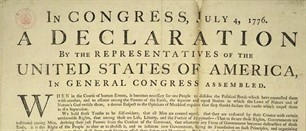
From our earliest beginnings as a republic,
long before the American colonists won independence from the king
of England, men and women dreamed of building a nation of laws that
safeguarded basic, inalienable rights for all citizens. In
the early 18th century this idea - a nation of laws - was a radical
departure from the autocratic governments that had ruled the people
of Europe for nearly two thousand years. To build a
nation of laws, wrote the 17th century English empiricist, John
Locke (the ideological midwife of our Declaration of Independence),
is the natural aspiration of all free men.
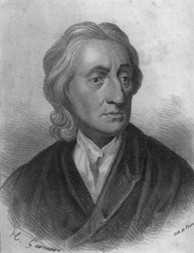
When our Founders were presented
with the opportunity to build just such a nation, they erected the
American house of democracy upon a hierarchy of laws. Some
laws - the load bearing beams that support the floors and roof -
have to carry more weight than the joists and rafters.
These structural laws protect our most sacred principles - that all
men are created equally in the eyes of the law and have inherent
rights to life, liberty, and the pursuit of happiness (and
property). They are enumerated in the first ten amendments to
the U.S. Constitution, also know as the people's Bill of
Rights. Joining those laws is a keystone construct that the
Founders called 'the supreme law of the land.' This keystone
construct gives the central government the power to make treaties
in sovereign-to-sovereign compacts.
Bundled together in the
complex framework of the U.S. Constitution are the laws that carry
forward the hopes and dreams of United States citizens from one
generation to the next. The Constitution also makes it
possible for our nation to co-exist peacefully (and to resolve
conflicts) within the larger community of nations. At the
other end of this spectrum of laws are those laws not embodied in
the Constitution - laws, for example, that tell us how fast we can
drive a car, that yelling 'Fire!' in a crowded theater is not
protected under the freedom of speech, or how much it costs to
license a pet.
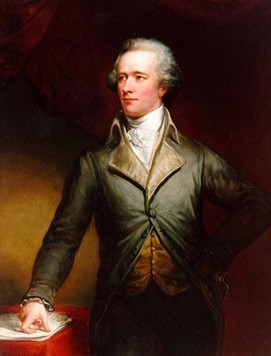
We
might ask, as Alexander Hamilton asks in Federalist Papers, "Why
has government been instituted at all?" All of human history
makes that answer rather obvious, says Hamilton. We have
instituted government because the history of human societies has
taught us that "the passions of men will not conform to the
dictates of reason and justice without constraint." Thomas
Jefferson and his cohorts disagreed with this assessment.
They argued that free men, left to their own devices and
opportunities, would always act in an altruistic fashion that
benefited their neighbors, and society in general. Hamilton
scoffed at this notion and accused Jefferson of being completely
ignorant of 'the science of human nature.' The tension that existed
between these views at the very beginning of our nation is the same
tension that has charged the mainspring of democracy with its
vibrancy and energy, ever since. Such disagreements are both
the strength of democracy, and its Achilles heel.
Hamilton - the one true genius among a multitude of near deities we
call our Founders - had summarized human history in a few
words: government is necessary because the passions of men will not
conform to the dictates of reason and justice without
constraint. Joseph Ellis, one of George Washington's recent
biographers, tells us that Washington agreed. The nation's
First Citizen saw deep and worrisome fault lines running through
our national character. From our earliest rumblings as a
nation, he and Benjamin Franklin were deeply worried that "Life,
liberty and the pursuit of happiness," the most cherished
principles of American democracy, would be denied to the very
people who made 'national expansion' possible -- the Native
Americans. With mounting dread, Washington recognized that
"what was politically essential for a viable American nation was
ideologically at odds with that it claimed to stand for." He
and Ben Franklin (among others) realized the United States was
shaped at its moment of conception by antipodal ideals and
underlying paradoxes. Somewhere on the way to full national
maturity there would have to be a reckoning between what was
'politically essential' for national survival, and what the nation
claimed to stand for - the principles enshrined in it's laws.
On the road to
nationhood, the Founders elevated the government's treaty-making
powers to the 'supreme law of the land' in order to prevent
individual states from negotiating separate treaties with sovereign
Indian nations. As important as this provision was to
the integrity of the national government, the Founders had laid
claim to an exclusive privilege that would fuel all future battles
over federalism (the distribution of power among competing
governments). As Chief Justice John Marshall later explained
in several important Indian cases, the U.S. Constitution was
a flawed document of incorporation. Chief among those flaws
was the Founders'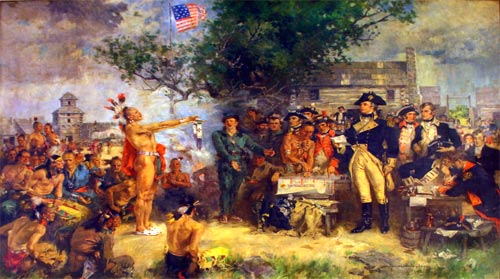 failure
to explain how sovereign Indian nations would fit into the scheme
of federalism that incorporated many state governments within one
national government. As we now know, this flaw in the
national charter would account for untold misery, bloodshed, and
the 'genocide' of Indian people throughout the nation's first
century.
failure
to explain how sovereign Indian nations would fit into the scheme
of federalism that incorporated many state governments within one
national government. As we now know, this flaw in the
national charter would account for untold misery, bloodshed, and
the 'genocide' of Indian people throughout the nation's first
century.
Without the supremacy clause, without
the power to make treaties with sovereign nations (Article VI of
the Constitution), the tiny republic of thirteen states on the
eastern seaboard could never have expanded beyond the Appalachian
ridgeline. The 'supremacy clause' in Article VI of the
Constitution put the federal government, and the leaders of Indian
nations, on an equal legal footing in sovereign-to-sovereign
negotiations over Indian owned lands and resources. As
restless citizens looked west to establish new settlements in the
Ohio Valley, the first casualties of national expansion would be
the nation's most sacred laws. Just as Washington had
feared, the vanguard of white society trampled the native's
inherent sovereignty and freedom with grave consequences for the
nation's most sacred principles: 'life, liberty, and the pursuit of
happiness.' The first society to build itself into nation of
laws was also the first to violate those laws in the name of
national expansion. Eastern tribes were the first to
experience a new truth about the republic of laws and its legal
system: the values of liberty and equality in America were
contingent on whose liberty and equality were at stake in all
contests over land and resources.
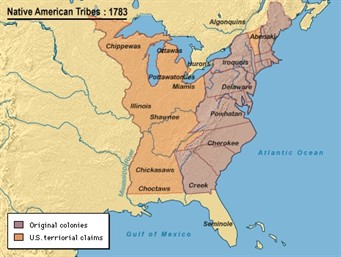
When the United States was founded in
1787, it came into existence inside the much larger boundaries of
Native America. Over the next hundred years, land cessions
made in hundreds of treaties by 500 Indian nations, and ratified by
the U. S. Senate, allowed the westward-looking Americans to expand
across the continent to the Pacific Ocean. To our national
misfortune, generations of American school children have been
taught a simplistic thesis of expansion put forward by historian
Fredrick Jackson Turner more than a century ago; that the plotline
of the nation's story followed the frontier west to the Pacific
Ocean. Here, we argue that Turner's frontier thesis is an
earnest but simplistic subplot to a much larger narrative that
better explains the century-long phenomenon we call 'national
expansion.'
Instead
of constructing our national story by following frontier
settlements across the continent, as Turner recommends, we argue
that the story of the nation's laws, and the story of how those
laws shaped the hundreds of treaties we made with sovereign Indian
nations, creates a much more compelling and accurate account of how
Americans accomplished 'national expansion' to the Pacific Ocean in
the 19th century. This reinterpretation explains 'how' and
'why' the hundreds of treaties with Indian nations make a precise
and faithful model for our national story. 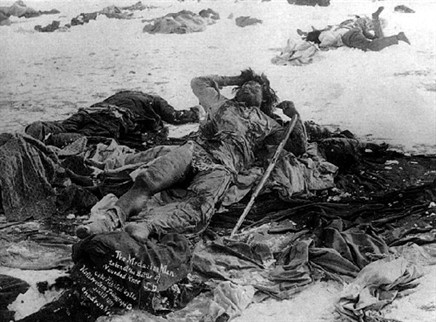
Our story of
'national expansion' begins with the signing of the first treaty of
friendship with the Delawares, in 1778, and ends over a
century later when the census of 1900 showed that a robust
civilization of many millions of native people had been reduced to
fewer than 250,000 in less than two centuries. This model
also demostrates how George Washington and Benjamin Franklin's
fears became the history of record that we share today with Native
Americans (African Americans, Latinos, and Asian Americans).
On our path to full national maturity, the historical record makes
it clear that we abandoned our most sacred laws in order to lay
claim millions of square miles of land owned by sovereign Indian
nations.
Seen through the
parallel lenses of history and law, 20/20 hindsight explains how
Indian treaties became society's stepping-stones across the
continent. In steady and methodical fashion, settlers moved
across the eastern wilderness owned by the Five Civilized Tribes
and the Iroquois Confederacy, the Sauk and Foxes and Miami and
Delaware, among others, and jumped across the Mississippi River
where they made treaties for land cessions with tribes in Arkansas,
Missouri, and Iowa, before forcing them, too, off their
lands. As the Second Era of treaty-making began in 1850,
settlers crossed the Indian land bridge between Independence,
Missouri, and the Willamette Valley of Oregon, and devastated
Indian lands and resources. They pushed their settlements
across a Great Plains owned by the Mandan, Hidatsa, Arikara, Sioux,
Pawnee, Kiowa, Comanche, and Assiniboine, where they turned the
prairie into rectangular homesteads before mounting an assault on
the Rocky Mountains of the Shoshone, Crow, Blackfeet, Nez Perce,
Cheyenne, and Flathead. 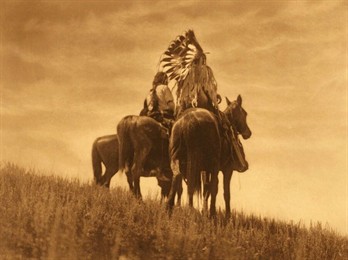 Treaties they made with
mountain and river tribes carried them to the Pacific Ocean.
Once there, treaties of peace with dozens of coastal tribes, such
as the Modoc, the Cahuilla, Salish, and Snohomish, among others,
were abrogated almost as quickly as gold prospectors, settlers, and
fur traders, turned the ceremonies of peace into a record of
national dishonor. Only one in six California Indians
survived the golden state's the first decade of statehood.
Treaties they made with
mountain and river tribes carried them to the Pacific Ocean.
Once there, treaties of peace with dozens of coastal tribes, such
as the Modoc, the Cahuilla, Salish, and Snohomish, among others,
were abrogated almost as quickly as gold prospectors, settlers, and
fur traders, turned the ceremonies of peace into a record of
national dishonor. Only one in six California Indians
survived the golden state's the first decade of statehood.
As the
preeminent legal scholar, historian, and author, Charles Wilkinson,
has written, "This is the true story of the era of Manifest
Destiny and the westward expansion." This is America's story,
our story - the enduring legacy of the paradox of freedom
that is yours, mine, ours, and the birthright of all who will
follow us. This web site seeks to support the film and the
book with materials and resources that provide essential context
for the extraordinary role that treaties, and Native American
nations, played in the making of this nation. The History
Wheel, the hub of this site, integrates a multitude of sources,
events, people, and places, into a (hopefully) coherent,
multifaceted picture of how our nation was made. Ours is an
epic tale of popes and kings, presidents and rogues and savages and
scoundrels, a national narrative that is written in the blood of
the best and worst of us, on the timeless dust of this land.